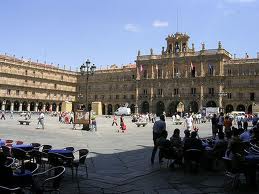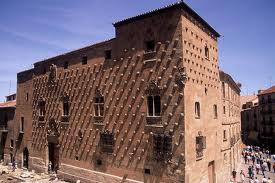Museums in Salamanca
Known worldwide for the fame of its university, one of the oldest educational institutions in Europe, Salamanca is a small but vibrant city to the west of Spain, where the combination of a young and jovial population and a millenary tradition provide a unique atmosphere. Both entertaining and culturally diverse, Salamanca is practically a living museum, with one of the most extraordinary samples of typically Spanish Renaissance architecture and a highly developed sense of aesthetic that make the city, developed over millennia, uncannily uniform.
Dominated by the imposing figure of its cathedral, Salamanca is often known as the Golden City' due to the sumptuous decor of the many historic buildings that shape its skyline. A city that revels in its historical significance, most Salamanca city guides will tell that the original name of the place was Helmántica, a settlement as old as the 3rd century BC. Conquered by the Carthaginians first, the Romans took possession of Helmántica following the Punic Wars, and turned it into a prosperous town by including it in the infrastructure that led to Asturica (present day Astorga), where much silver was extracted and shipped.
While there is still some trace of the Roman presence in ancient Salamanca, for instance in the northern end of the bridge over the river Tormes, the apogee of Salamanca's cultural heritage arrived during the Middle Ages, after the Christian legions had retaken the city from Muslim hands. Christian influence in Salamanca has its roots far before this, however, as the bishopric of the city was already mentioned in the Councils of Toledo, which took place between 400 and 700 AD.
Like the rest of Spain the population in Salamanca, following the alternate occupation of Muslims and Christians, would remain largely mixed, blending habits, styles, traditions and, ultimately, producing the essence of Spanish culture. It is during this period, somewhere in the XII century, and largely propelled by the initiative of re-population devised by the Christian kings to hamper the chances of a renewed Muslim occupation, that the idea of a cathedral was conceived. It would take, however, close to two centuries to finish the construction.

Salamanca's late Romanesque cathedral has been modified over the years, such that the original structure is often hard to recognise. However, it still remains one of the most popular attractions among visitors of the city. Therefore, should you decide to travel to Salamanca, you should not miss the opportunity to visit the temple.
An important landmark in the history of the city came in the XII century, when King Alfonso IX of León granted an official charter to the ´General School of the Kingdom' in Salamanca, finally formalising the institution which since 1134 had been imparting education. In 1254 King Alfonso X would declare the institution a 'University', turning it into the first organisation to receive such name in Europe. Altogether, the University of Salamanca is the third oldest university in Europe, behind Bologna and Oxford, and the oldest one in Spain.
Therefore, Salamanca is still today marked by a highly intellectual activity, which combines disciplines from the entire spectrum of academia. For instance language school in Salamanca abound, and the environment is conducive to creating a lively environment where exchange can lead to learning in more amenable ways. This atmosphere also affects the arts scene of the city, which, given its young and liberal population is predictably varied and active.
Practically set in the largest and most remarkable museum of two of the most autochthonous forms of Spanish art, the Plateresque and Churrigueresque strains of Renaissance and baroque art respectively, Salamanca provides a constant source of inspiration merely from looking at the walls on the street and the details in the sumptuous buildings. especially if you like your art over the top. Which, again, becomes evident in the density of museums that exist in Salamanca: from Art Deco to religious art, going through modern art or, even, modern design and technology, such as that exhibited in the Museum of the automobile, the city always has something else in store.



